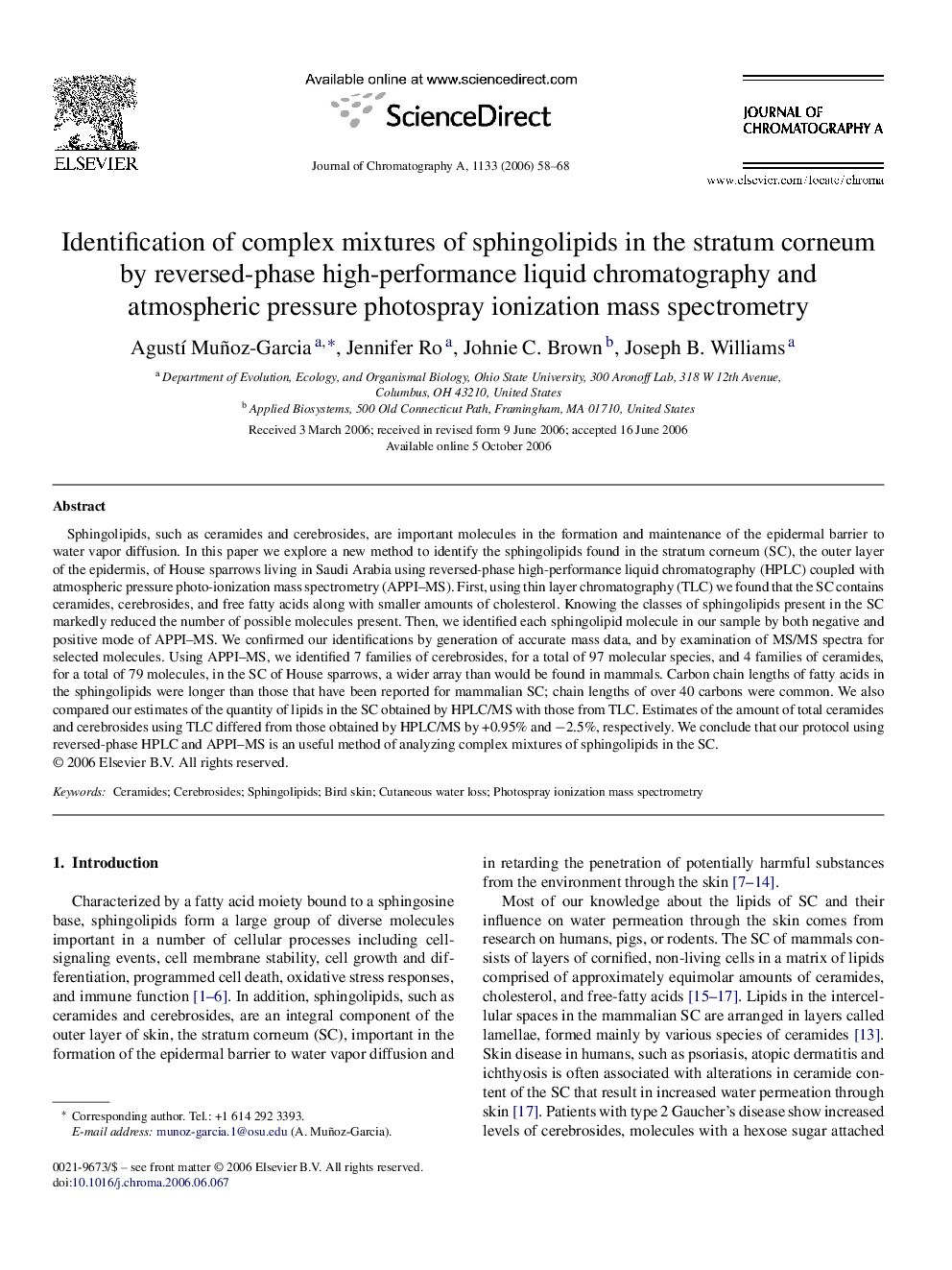| Article ID | Journal | Published Year | Pages | File Type |
|---|---|---|---|---|
| 1211302 | Journal of Chromatography A | 2006 | 11 Pages |
Sphingolipids, such as ceramides and cerebrosides, are important molecules in the formation and maintenance of the epidermal barrier to water vapor diffusion. In this paper we explore a new method to identify the sphingolipids found in the stratum corneum (SC), the outer layer of the epidermis, of House sparrows living in Saudi Arabia using reversed-phase high-performance liquid chromatography (HPLC) coupled with atmospheric pressure photo-ionization mass spectrometry (APPI–MS). First, using thin layer chromatography (TLC) we found that the SC contains ceramides, cerebrosides, and free fatty acids along with smaller amounts of cholesterol. Knowing the classes of sphingolipids present in the SC markedly reduced the number of possible molecules present. Then, we identified each sphingolipid molecule in our sample by both negative and positive mode of APPI–MS. We confirmed our identifications by generation of accurate mass data, and by examination of MS/MS spectra for selected molecules. Using APPI–MS, we identified 7 families of cerebrosides, for a total of 97 molecular species, and 4 families of ceramides, for a total of 79 molecules, in the SC of House sparrows, a wider array than would be found in mammals. Carbon chain lengths of fatty acids in the sphingolipids were longer than those that have been reported for mammalian SC; chain lengths of over 40 carbons were common. We also compared our estimates of the quantity of lipids in the SC obtained by HPLC/MS with those from TLC. Estimates of the amount of total ceramides and cerebrosides using TLC differed from those obtained by HPLC/MS by +0.95% and −2.5%, respectively. We conclude that our protocol using reversed-phase HPLC and APPI–MS is an useful method of analyzing complex mixtures of sphingolipids in the SC.
